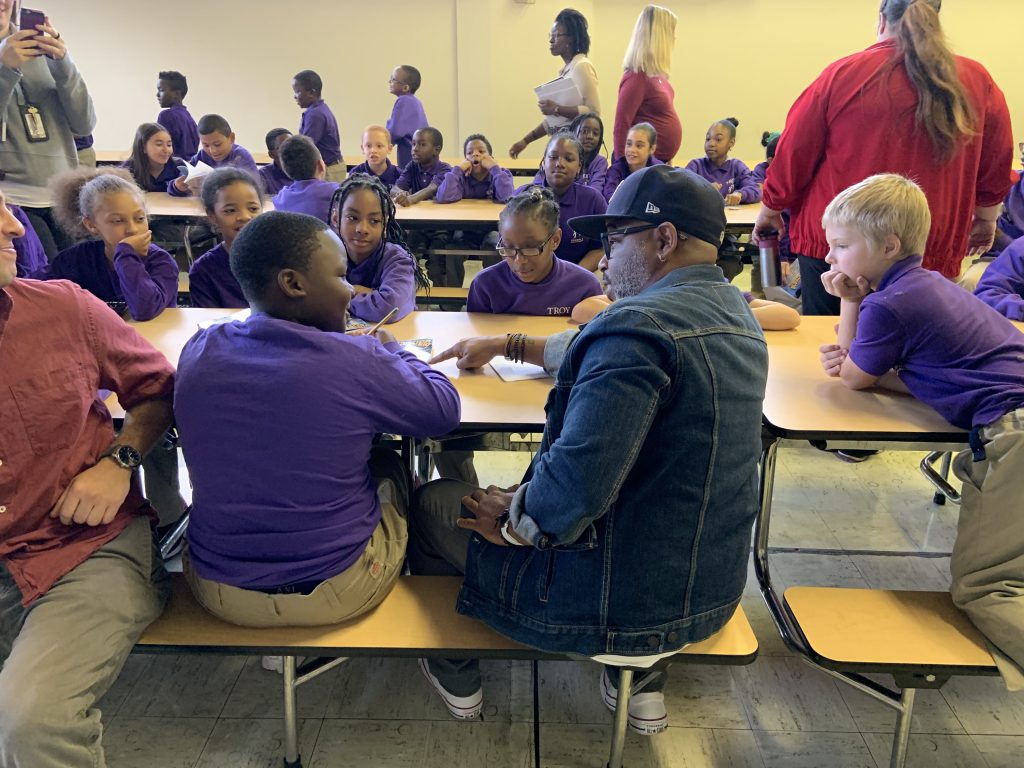
6 Ways to Celebrate Read Across America
by Ty Allan Jackson
Do you want to know my #1 strategy for entertaining a room full of fidgety elementary school students? Here it is: before a presentation begins, I try to have as many individual interactions with the students as possible. Even if they only last one moment. So it was in that spirit that I zigzagged my way through a packed school cafeteria in Troy, NY last September, chatting and high-fiving students as they settled in for my presentation. After a few minutes, a 10-year-old boy at a table near the front beckoned me over. “I didn’t like reading until I read your book,” he said matter-of-factly, holding up a copy of The Supadupa Kid.
I gave him a hug and thanked him for being a fan of the book before moving onto the next table. But his words, which I’ve heard many times before, stuck with me throughout the day. As much as I love hearing that kids enjoy my books, the underlying message behind these words concerns me. They are an indication of what is lacking in children’s literature today: representation.
Representation Matters
The goal behind all of my writing is to create stories and characters that are relatable to any child, no matter their background. I believe this is why so many children have told me that they didn’t like reading until they read one of my books. Children of color, for example, often only see themselves represented in books about slavery or the civil rights movement. They are bombarded with messages about overcoming the obstacles of discrimination. While it is important for children to learn about the shameful history of suppression in this country, it has to be balanced with stories about who they are as a whole.
The Supadupa Kid has a particularly big impact on young readers of color because it provides something that they don’t often see: a fun, contemporary story featuring a relatable black character. Children of color get to see themselves reflected in Javon’s experience as a normal kid dealing with everyday struggles like bullying, school crushes, and an annoying little sister. When Javon transforms into The Supadupa Kid, readers then get to imagine themselves as the strong, heroic, and noble superheroes that they see on the big screen. Children of all colors need to see themselves represented in the books they read, otherwise we can’t expect them to turn into lifelong readers. This is a major reason for a move within the literacy community toward embracing more diverse literature.
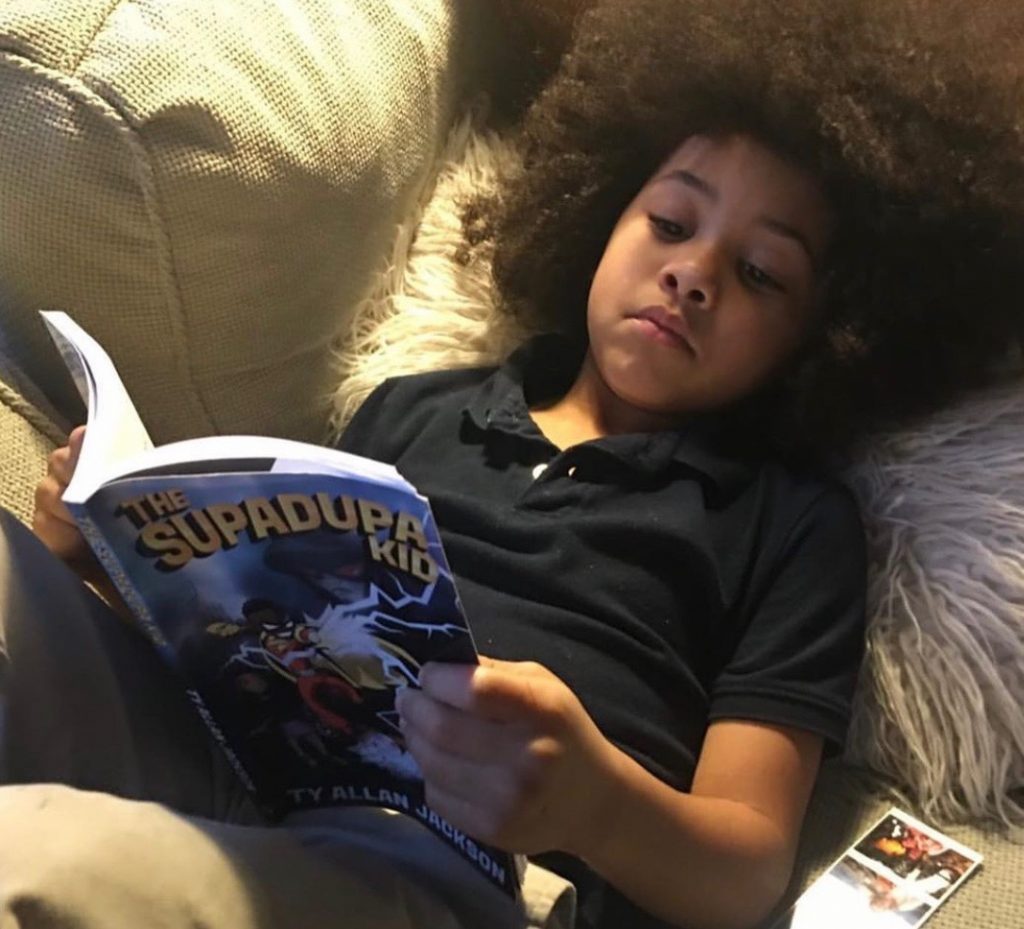
Redefining Read Across America
In 1998, the National Education Association (NEA) launched a literacy program called Read Across America. Dr. Suess’ birthday became Read Across America Day. In light of conversations within the literacy community about the problematic nature of some of Dr. Suess’ work, the NEA has adopted a new mission: Celebrating a Nation of Diverse Readers. Read Across America has shifted away from a celebration of just one man, and moved toward a “new focus on books that tell children of color or of different gender identities that they belong in the world and the world belongs to them.”
The best way to increase literacy is to make reading relevant, fun, and approachable for every child every day of the year. Let’s join the Read Across America movement and show all children that the world of literature belongs to them. Here are some fun ways to get started:
1) Comic Books Count
Comic books are an excellent gateway into reading, even for the most reluctant readers. They are a great transition into reading chapter books with more developed story lines, while still providing the colorful images that younger readers are accustomed to. Also, many comic books are part of a larger series or universe, which increases the chances that kids will keep reading by following their favorite storylines. The best thing about comic books is that there is something for everyone. There are heroes with disabilities like Daredevil, intelligence like The Hulk, and strength like Wonder Woman. And a new generation of superheroes includes characters of color like Spider-man (Afro-Latino) and Captain America (Black).
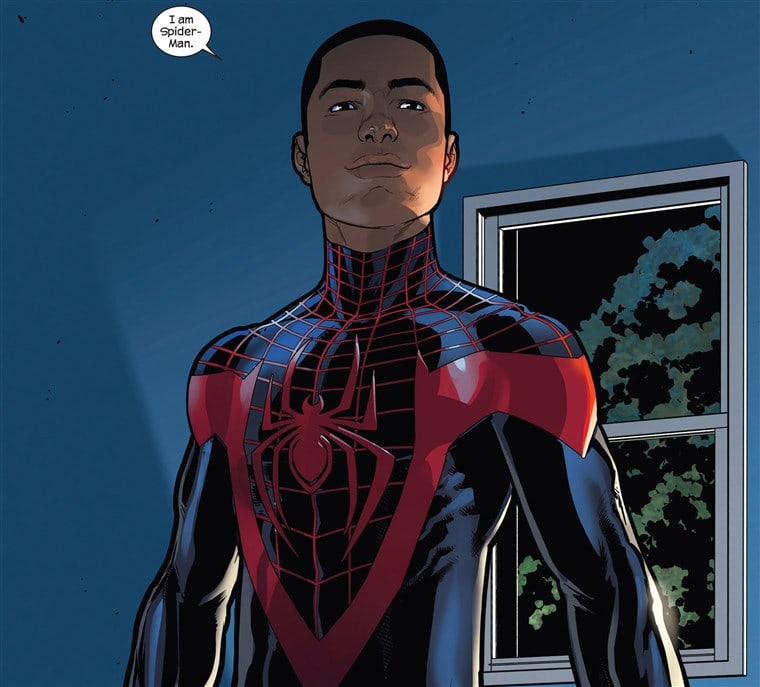
2) Family Movie Night
I know, I know, watching a movie might not seem like the best way to encourage reading, but stay with me. There is so much overlap between books (and comic books) and movies. Your child may have seen the superheroes listed above on the big screen, but have they read the corresponding comic books? There are so many incredible books behind our favorite movies, which can help make reading relevant for young readers. I would read books like The Wizard of Oz to my children when they were young, and then watch the movie together. This always led to great conversations comparing the book to the movie, and was a wonderful way to spend time together. You can do the same with Shrek, Matilda, and of course their favorite superhero.
3) Make it Social
An impromptu get together at your local library is a great way to make reading social. Have friends with kids? Invite them to gather and take turns reading aloud to the group. It’s so important for children to see adults reading. After all, actions speak louder than words, so a child is much more likely to read if you show them how fun it can be.
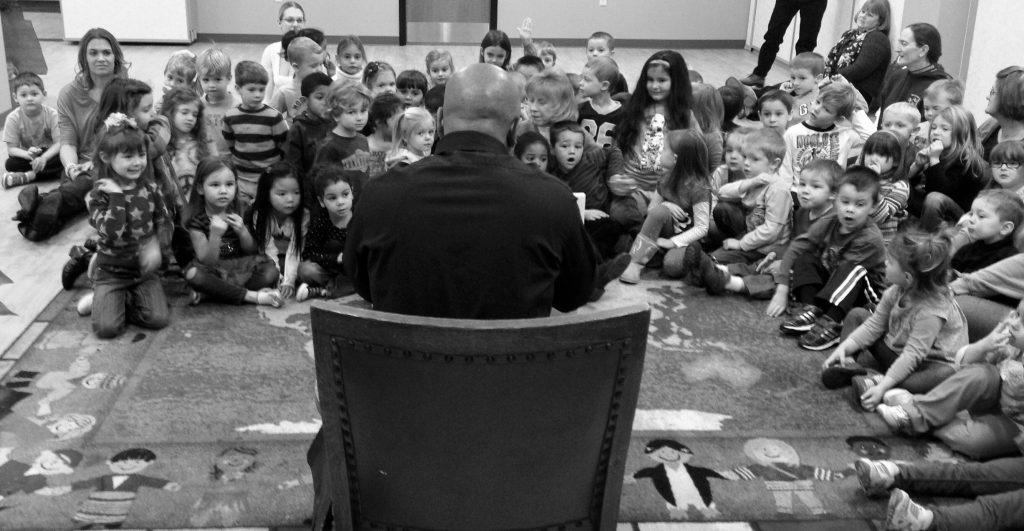
4) Keep it Local
Small bookstores need our patronage! Visiting a local bookstore is a great way for children to discover books that speak directly to them. As many of you know, a small bookstore is where Sydney Keys began a journey that landed him in his very own Marvel comic book. It took one book to change the course of his life. It’s our job to provide opportunities for children to discover their very own “one book.”
5) Refresh Your Child’s Library
Spring is just around the corner, so what better time to do some decluttering! Take inventory of your child’s home library. How many books in your home feature characters of color? What about characters with disabilities? Or different gender identities? We should be stocking our shelves with books that reflect a “nation of diverse readers.” You can replace books your child doesn’t read anymore with the ones you picked up at the bookstore.
6) Donate, Donate, Donate!
Just because your child is ready to move on from a book, doesn’t mean it won’t be treasured by another child. Bring your gently used books to a local school, homeless shelter, day care center, or Goodwill. Literacy organizations like The Red Book Shelf in Albany accept book donations so that they can fill the home libraries of children who might not otherwise have access to books. Also, check out your local library to see if they have a Friends of the Library Society that will accept donations. Most importantly, bring your child with you and help them understand the value of giving. This process will help children develop a better appreciation for the books that they have.
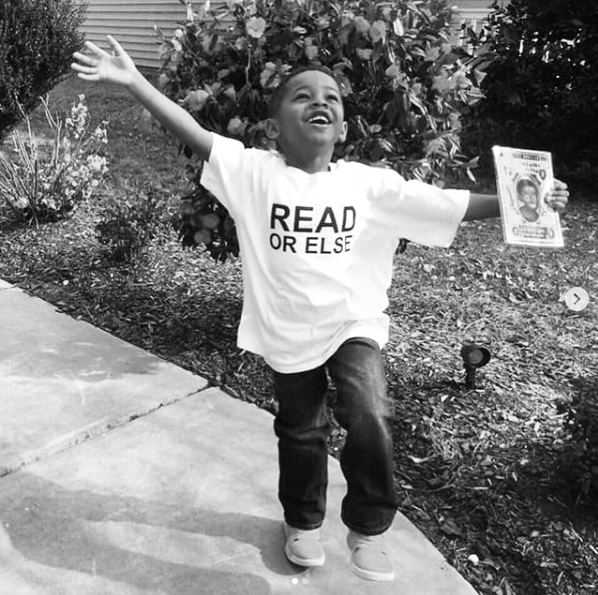
These are just a few ways that we can celebrate Read Across America and make reading fun for all children. What are some other ways we can inspire children to read? Leave a comment below to continue the conversation!